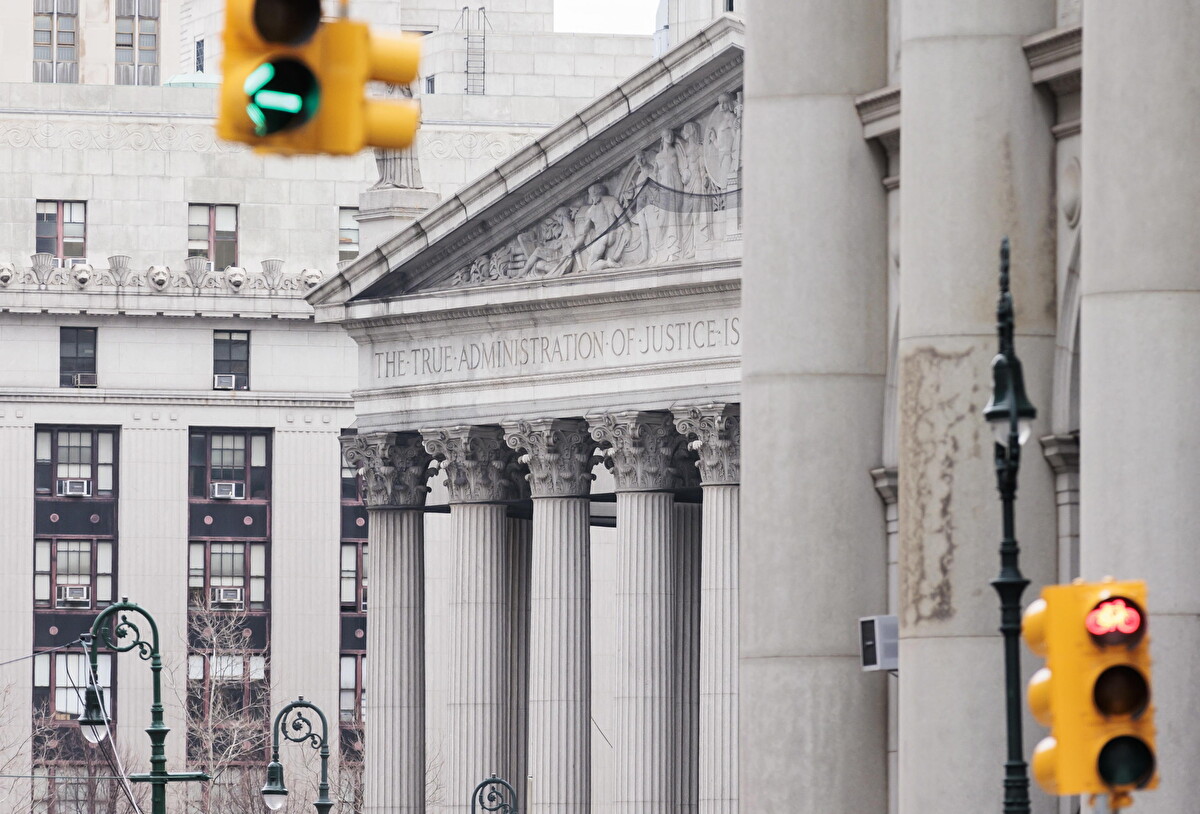There are a lot of reasons that could push one to become a cook: for Fausto Ferraresi it was the desire to travel. “I remember a lazy afternoon after the end of middle school, chatting on the swing with a friend. We were wondering what we would like to become. An auto mechanic? No, it’s not for me. Electrician? Neither. Or go to high school so that we could then go to college, but I always had a fear of exams. I wanted to be a citizen of the world. I wanted to travel. And so we thought about hospitality schools. I thought: a cook, yes, a cook! It was a revelation.” Fausto had found his path, but he didn’t yet know that that path would take him to New York.
The morning of our interview, we meet at The Leopard at Des Artistes, one of the restaurants managed by Gianfranco Sorrentino, a famous entrepreneur of Italian cuisine in New York. Once a kitchen and meeting spot for artists that lived and worked in the floors above, now it’s an elegant restaurant with beautiful murals on the walls that’s frequented by A-List New Yorkers, and Italians who have settled in the Big Apple but want a taste of home and high quality.
 The restaurant is open only for dinner so that Fausto can dedicate his morning to reorganizing the kitchen in search of ingredients and renewed creativity. The menu at The Leopard offers traditionally southern Italian dishes with a modern twist. The standard is one given by Sorrentino and his well trusted chef and entrepreneurial companion, Vito Gnazzo. However, since the arrival of Fausto Ferraresi, who doesn’t have much of the South in him and his recipes, the menu is starting to acquire a Romagnolo accent.
The restaurant is open only for dinner so that Fausto can dedicate his morning to reorganizing the kitchen in search of ingredients and renewed creativity. The menu at The Leopard offers traditionally southern Italian dishes with a modern twist. The standard is one given by Sorrentino and his well trusted chef and entrepreneurial companion, Vito Gnazzo. However, since the arrival of Fausto Ferraresi, who doesn’t have much of the South in him and his recipes, the menu is starting to acquire a Romagnolo accent.
Fausto is in truth from Bergantino, in Veneto, a small town of 2,500 citizens outside of Rovigo. But his influence comes, as it usually does in Italian families, from two women, his mother and grandmother, both originally from Rimini. It was there that Fausto would spend his summers, surrounded by the smells of his grandmother’s kitchen. And it was in Rimini that he went to hospitality school, where he found out how hard it would be to become a cook; during the summer, for example, while his friends were having fun at the beach, he would be home by the stove. “I cried real tears while I scaled grouper after grouper. I was extremely torn when I realized that being a cook would mean not sharing holidays with my friends and giving up my social life. You realize that to do the job you need to have a genuine calling for it, just like the priest. If there is no vocation you’re never going to make it.” Fausto clearly had the vocation and still does, because today, at 43 years old, he still hasn’t stopped doing it, and is doing it with passion at The Leopard.
The search for the lost taste
After gaining experience in Rimini, committed to not give up his traveling aspirations, Fausto moved to London, but the adventure didn’t last very long – due to an arm injury, he was forced to move back to Italy. A lot of different experiences followed; Fausto deepened his knowledge, enhanced his skills, and put together a more varied portfolio. He expanded his competence base and abilities by working in kitchens specialized in fish, kitchens specialized in meat, some specialized in modern cuisine, others with a more traditional style, some that offered a quick meal and some that offered a more formal environment.
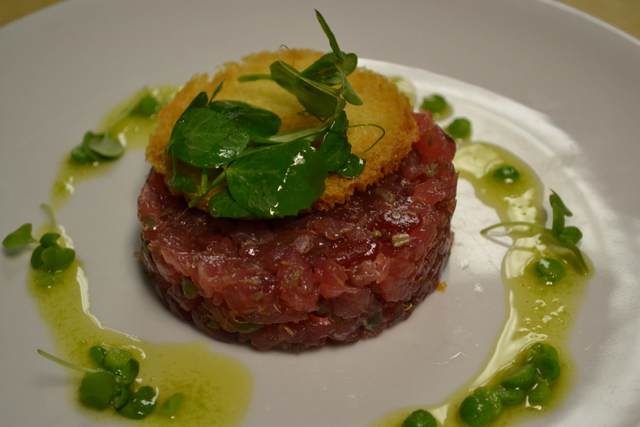 An important experience for Fausto was working at the Porta del Sasso, in Verucchio, where he discovered a passion for ancient and humble cuisine. He calls it the cuisine of forgotten dishes, such as potatoes in ashes, the macaroni pie, or the cockerel in clay, which would be made by a potter who would wrap up the cockerel along with field herbs, which Fausto would go and pick himself in farmlands around his town. “I would go around asking the ‘zdores (women, in Romagnolo dialect) of the town nearby to tell me about, and show me, their recipes. Then these dishes would need some retouching in order to make them more adequate to the demands and the needs of today’s life. The dishes used back in the day were very caloric because people worked in the fields and needed a lot of energy. If we ate all those calories today we wouldn’t be able to burn them and they would only end up weighing us down. Therefore recipes absolutely need to be lightened up.” Newspapers started talking about the cook who would knock on the doors of housemaids to acquire their tastes and knowledge. Fausto was putting together an interesting recipe book, bringing back to light dishes that had almost disappeared and bringing to the restaurant business a humble cuisine that had been underestimated for way too long.
An important experience for Fausto was working at the Porta del Sasso, in Verucchio, where he discovered a passion for ancient and humble cuisine. He calls it the cuisine of forgotten dishes, such as potatoes in ashes, the macaroni pie, or the cockerel in clay, which would be made by a potter who would wrap up the cockerel along with field herbs, which Fausto would go and pick himself in farmlands around his town. “I would go around asking the ‘zdores (women, in Romagnolo dialect) of the town nearby to tell me about, and show me, their recipes. Then these dishes would need some retouching in order to make them more adequate to the demands and the needs of today’s life. The dishes used back in the day were very caloric because people worked in the fields and needed a lot of energy. If we ate all those calories today we wouldn’t be able to burn them and they would only end up weighing us down. Therefore recipes absolutely need to be lightened up.” Newspapers started talking about the cook who would knock on the doors of housemaids to acquire their tastes and knowledge. Fausto was putting together an interesting recipe book, bringing back to light dishes that had almost disappeared and bringing to the restaurant business a humble cuisine that had been underestimated for way too long.
Psychology behind the stove
The step from rural Italy to metropolitan America was very small for Fausto. La Porta del Sasso was sold and he found himself on the road once again. It was then that a colleague, Mirco Del Vecchio, thought about adding Fausto to his team and called him to work at Ago in New York, the restaurant opened by Robert De Niro and other Hollywood personalities. After a few months gaining experience as an intern in a few locations of Ago came the triumphal opening in Tribeca.
“I was fascinated and overwhelmed by this marvelous city. It offers so much and is so competitive that it makes you realize how much you can outdo yourself. There is no limit. From a professional point of view it was quite traumatic because I came from a very Italian environment where there are just a few chefs in the kitchen, but when I came to New York it was like being thrown into an enormous machine with 30 other people.”
It was 2007 and everything seemed to be going great. Fausto was starting to fit into the new working environment, learning that working in a kitchen is also very psychological.
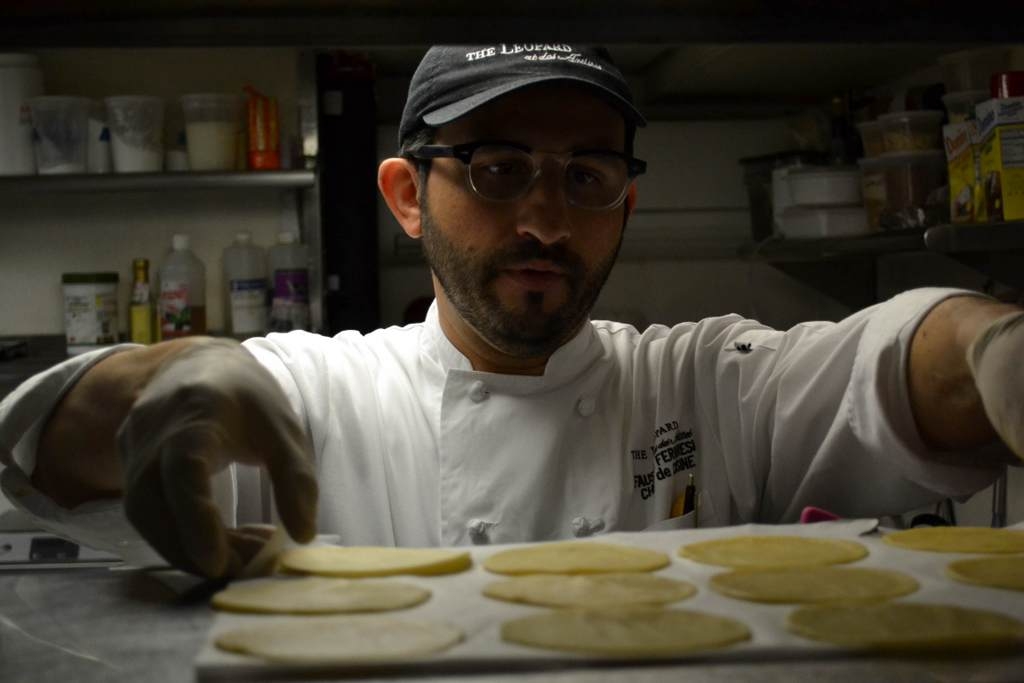 “The interaction with others was hard at first. There was a linguistic barrier, but I also had to learn the psychology of the people around me; the rules of how to behave; what I could say and what I should not; the things one should be careful about. But then I started to understand and it became easy: religion, race and sexual orientation are things one shouldn’t dare to mention. Then there were obviously the dishes that I couldn’t make here. The recipes with which I had started to experiment in Italy are hard to take for Italians, never mind for Americans. I learned that I always had to compromise in order to please the American palate. In the end it was all a very precious experience”.
“The interaction with others was hard at first. There was a linguistic barrier, but I also had to learn the psychology of the people around me; the rules of how to behave; what I could say and what I should not; the things one should be careful about. But then I started to understand and it became easy: religion, race and sexual orientation are things one shouldn’t dare to mention. Then there were obviously the dishes that I couldn’t make here. The recipes with which I had started to experiment in Italy are hard to take for Italians, never mind for Americans. I learned that I always had to compromise in order to please the American palate. In the end it was all a very precious experience”.
The great recession
But then came the crisis, the stock market crash, panic everywhere. “In that period there was a strange atmosphere in New York. It was as if the city had changed rhythm. You would see bankers and brokers get drunk in the middle of the afternoon… It was quite scary.” The first to close were the businesses that weren’t necessary. A restaurant like Ago, thought for a society that is not worried about spending too much to indulge in pleasure, definitely wasn’t essential. “They started firing a person after the other. You would go to work in the morning and find half of your colleagues gone. You knew that sooner or later it would be your turn. You would work, but you were waiting for the day it would happen to you.”
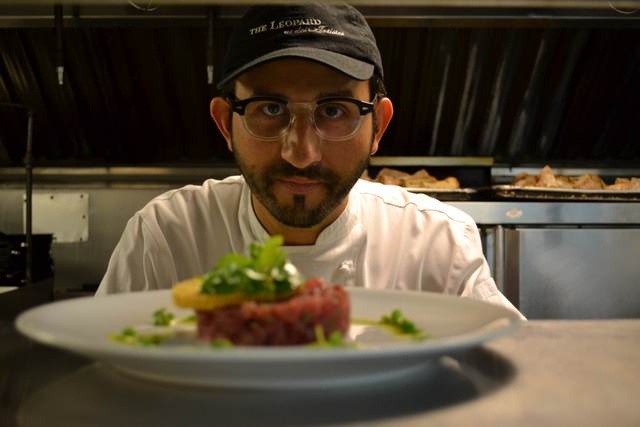 At the end, just before they closed the restaurant in April 2009, it was Fausto’s turn to leave and he had to reinvent himself once again. He had no intention of going back to Italy, because the crisis was starting to move towards Europe as well and the feeling was that New York and the rest of the United States would find their way out. Italy instead, who could tell? Fausto started looking for new opportunities and moved from a French bistro to an Italian steak house all while trying to continue on his journey toward the improvement of his American palate. “As time went by I started to realize how Americans, as a society, are different from us. They engage in a different sort of fun, they articulate their phrases differently, obviously they eat differently. I happened to hear unbelievable things from clients. A woman once sent back a fish dish because it tasted “too oceanic,” another time they told me that the Bolognese ragu was overcooked. If you consider these things from an Italian point of view they’re obviously going to sound absurd, but if you want to be a citizen of the world you have to realize that you can’t be too authentic. We are the ones that are obsessed with authenticity. The American doesn’t look for Italian authenticity, but just for a sense of Italy. The menu is like a language, you have to choose the vocabulary to use. Often you tend to choose those that are more familiar to your audience, something that they are going to be able to interpret. Therefore the Italian dish has to be made with ingredients they know, that they are able to recognize. Learning how to cook for Americans has been like learning a new language, like learning English…”
At the end, just before they closed the restaurant in April 2009, it was Fausto’s turn to leave and he had to reinvent himself once again. He had no intention of going back to Italy, because the crisis was starting to move towards Europe as well and the feeling was that New York and the rest of the United States would find their way out. Italy instead, who could tell? Fausto started looking for new opportunities and moved from a French bistro to an Italian steak house all while trying to continue on his journey toward the improvement of his American palate. “As time went by I started to realize how Americans, as a society, are different from us. They engage in a different sort of fun, they articulate their phrases differently, obviously they eat differently. I happened to hear unbelievable things from clients. A woman once sent back a fish dish because it tasted “too oceanic,” another time they told me that the Bolognese ragu was overcooked. If you consider these things from an Italian point of view they’re obviously going to sound absurd, but if you want to be a citizen of the world you have to realize that you can’t be too authentic. We are the ones that are obsessed with authenticity. The American doesn’t look for Italian authenticity, but just for a sense of Italy. The menu is like a language, you have to choose the vocabulary to use. Often you tend to choose those that are more familiar to your audience, something that they are going to be able to interpret. Therefore the Italian dish has to be made with ingredients they know, that they are able to recognize. Learning how to cook for Americans has been like learning a new language, like learning English…”
Discovering the South
Then there was another lay off due to economic issues. Once again, the cook from Veneto with Romagna in his heart had to put himself on the market. The opportunity happened by chance, when a wine salesperson told him that Gianfranco Sorrentino was looking for someone for The Leopard. “The day after, I had an interview with Gianfranco and started working immediately. At the beginning I was a little concerned: this is a restaurant from the South of Italy and I am not from the south, nor have I ever worked for a restaurant from the south. But fortunately I had a strong traditional background which helped me and, either way, experience and sensitivity make you flexible for any situation. At the beginning Gianfranco and Vito didn’t let me participate in the making of the menu too much. They would accept suggestion, but I didn’t have a lot of freedom. Then, with this last menu, I started putting in some of my dishes. For example, marinated sardines, which are a dish my grandmother used to make, to which I’ve added an arugula salad and carasau bread.”
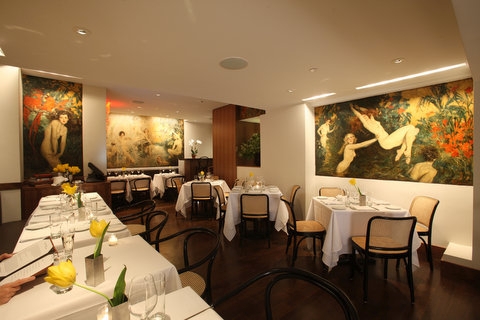 After so much wandering, Fausto seems to have finally found his dimension at Leopard, where he can express his creativity. “To put yourself in the game is always essential in this profession, but you also need a good dose of humility. You can never stop or think that you’ve arrived. Working with Vito, there is a continuous exchange. We have a good balance because he is more old school but has great respect for recipes and ingredients.”
After so much wandering, Fausto seems to have finally found his dimension at Leopard, where he can express his creativity. “To put yourself in the game is always essential in this profession, but you also need a good dose of humility. You can never stop or think that you’ve arrived. Working with Vito, there is a continuous exchange. We have a good balance because he is more old school but has great respect for recipes and ingredients.”
And maybe now he’ll also be able to start working on the traditional cuisine project he left behind in rural Italy, starting with the recipe we present you with below, the soup in the rag: the dish that to Fausto symbolizes the course of his research, rescue, and divulgation of the cuisine of an ancient era. It was a “’zorda” of Verucchio, la signora Celli, who told him about this tasty recipe she used to prepare all the time, especially on Sundays. “I went to her house and I watched her prepare it, and once I tried it I fell in love with it. Now that I’ve been making it for a year, I hope to introduce it here at the Leopard someday, even though it’s from northern Italy.” In the meantime, while you wait to try Fausto’s, you can make it yourself at home.
Minestra allo straccio (soup in the rag)
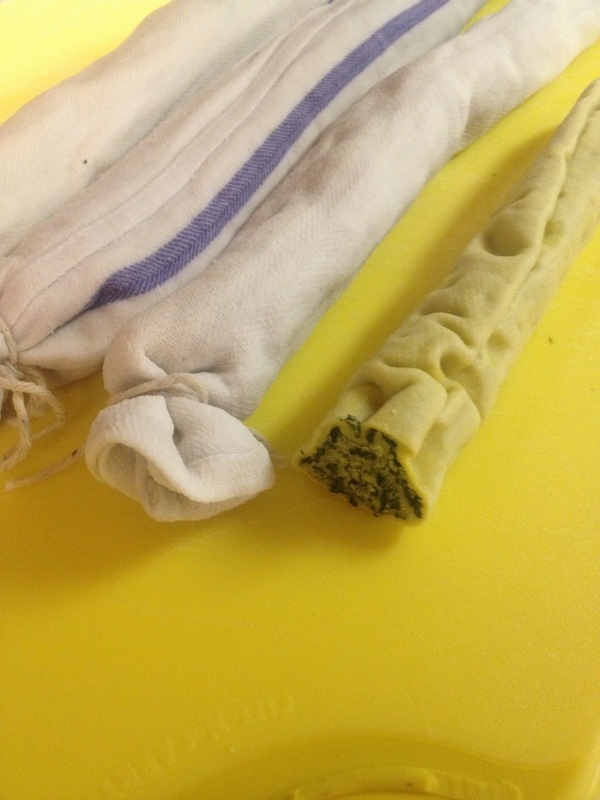 Ingredients:
Ingredients:
3.5oz of ricotta cheese;
3.5oz of stracchino or soft caciotta cheese;
3.5oz of parmesan cheese;
3.5oz of spinach or boiled herbs;
1 grated lemon;
Nutmeg;
Milk as needed.

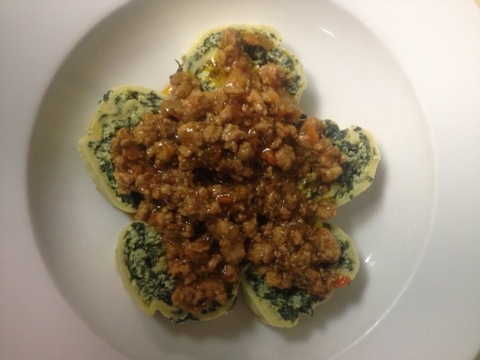 Directions: Knead all the ingredients and add the milk if the mixture is too hard. On the side, spread a phyllo dough as you would for lasagna, spread the mixture and roll it up. Wrap in a kitchen rag and tie the ends with cord. Horizontally immerse it in boiling water and cook it for 40 minutes, once this is done leave to cool down on the table, rolling it in order to keep the round shape. Cut in slices and cover with meat ragu.
Directions: Knead all the ingredients and add the milk if the mixture is too hard. On the side, spread a phyllo dough as you would for lasagna, spread the mixture and roll it up. Wrap in a kitchen rag and tie the ends with cord. Horizontally immerse it in boiling water and cook it for 40 minutes, once this is done leave to cool down on the table, rolling it in order to keep the round shape. Cut in slices and cover with meat ragu.








